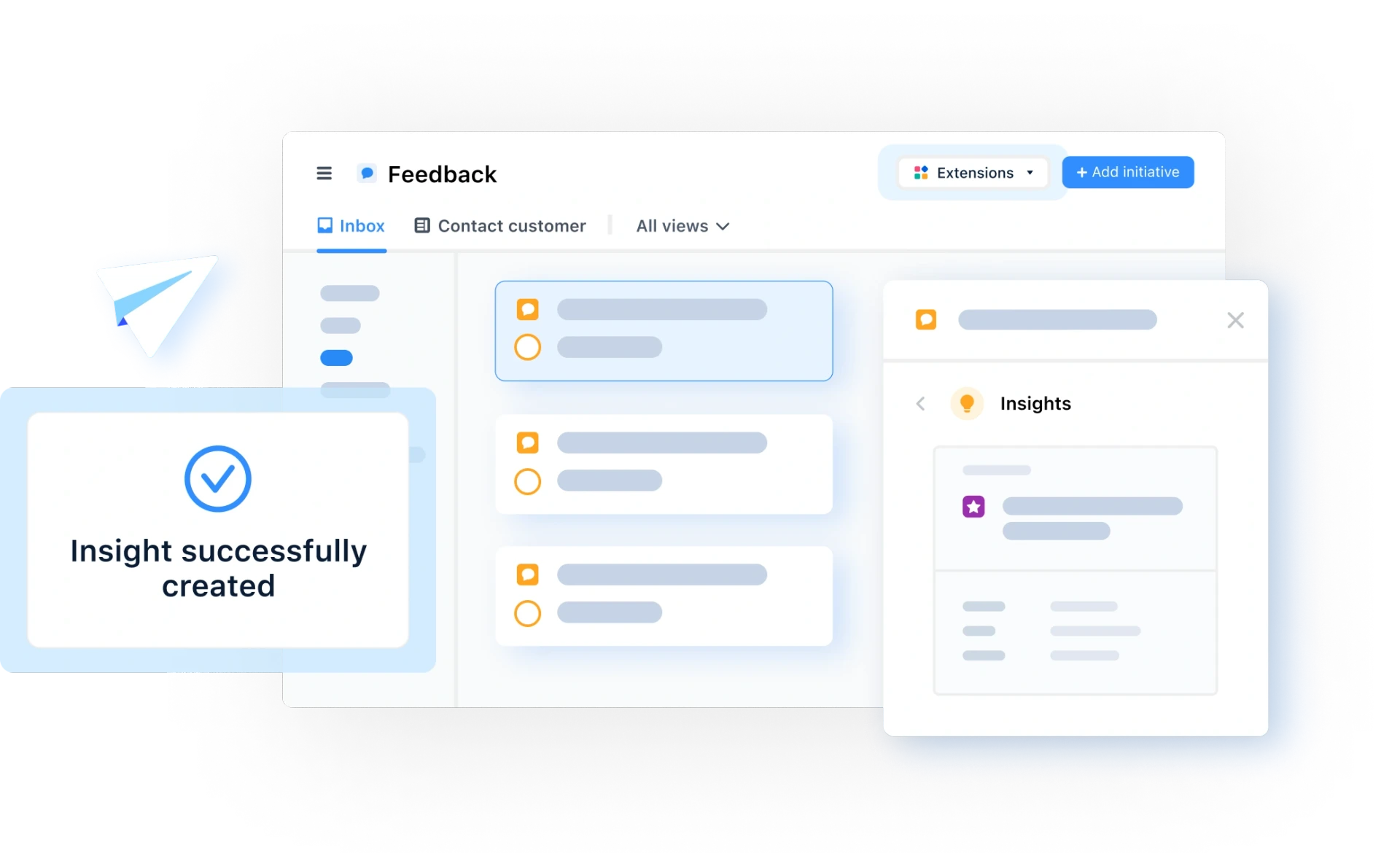Product Feedback
What is product feedback?
What is Product Feedback and its examples?
Product feedback is invaluable; it provides insights from the people that actually use your product and lets you know which features work, which don’t, and what is needed to boost customer satisfaction.
How do you get product feedback?
If you want to receive feedback, you’ve got to ask for it. You might receive unsolicited emails from customers with various feedback (usually bug reports), but if your customers don’t know you’re looking for their input, they’re unlikely to go out of their way to let you know what they think.
To collect product feedback, you can utilize a number of platforms from social media to dedicated product feedback surveys. Try and keep it simple where possible. Offering long, dull looking forms will put users off and cause you to miss out on valuable insight.
What is a product feedback survey?
Product feedback surveys are a tool that companies can use to gain valuable insights from their customers. A product feedback survey can be run at any point during development and even post-release.
Download Now: Get our 5-minute guide on Why Insights Are Essential and How to Source Them
What does a strong Product Feedback submission look like?
Unfortunately, not every response will be as valuable as you might hope. However, if you’re putting out a product feedback survey that asks the right questions, you’re going to get some high quality insights that add value to your product.
A strong product feedback submission will be clear and to the point, offering insights that translate into value for your company.
How do you define customer feedback?
Customer feedback is information offered by customers giving you first hand insights about their experience with a product or service. The feedback can be used to determine customer satisfaction, assist in marketing efforts, and come up with new features.
How do you get product feedback from your customers?
There are plenty of ways to collect customer feedback, especially online. A simple widget on your site can let users give feedback with a simple rating, using anything from a numbered rating system to an emoji.
For more in-depth feedback, companies can set up dedicated feedback systems that allow customers to give specific feedback, based on a series of tailored questions.
How to build an effective product feedback loop?
A customer feedback loop is a strategy that facilitates constant product improvement based on users’ opinions and suggestions. As the name might suggest, effective feedback loops are based on mutual interaction between a company and its customers. Keeping a steady conversation going about your product with those who use it will provide far better feedback than hours of intercompany meetings ever would.
Download Now: Get our 5-minute guide on Why Insights Are Essential and How to Source Them

General FAQ

Glossary categories
All product feedback in one place

Experience the new way of doing product management








